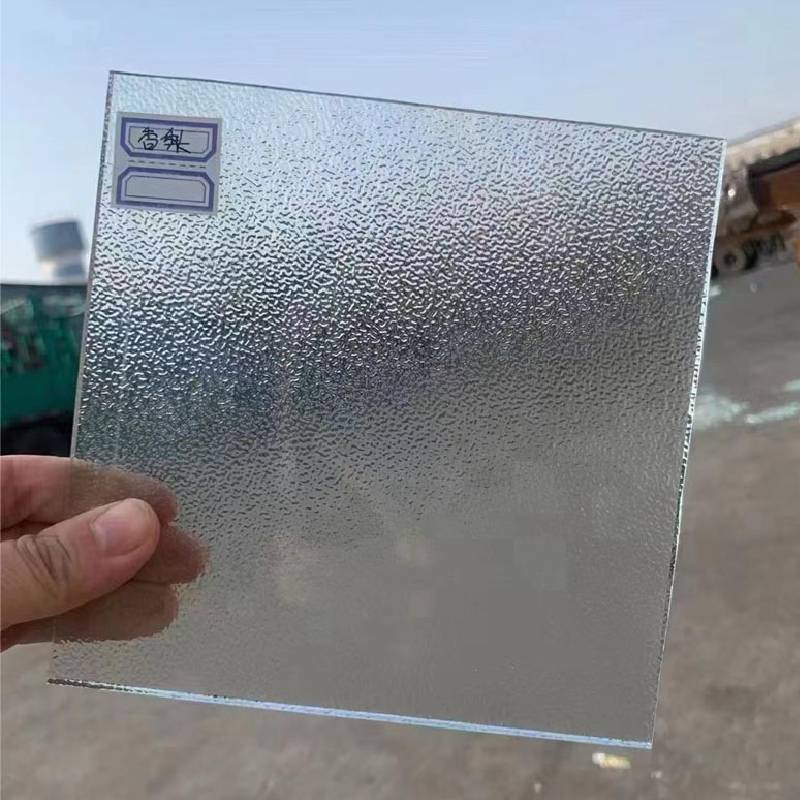The Float Glass Process An Overview
The float glass process is a revolutionary method of producing high-quality flat glass, widely used in windows, mirrors, and various architectural applications. Developed in the mid-20th century, this technique has become the dominant method for manufacturing glass sheets due to its efficiency, cost-effectiveness, and the superior quality of the final product.
The Origins and Development
Before the float glass process was invented, glass production involved more labor-intensive methods such as hand-blowing or pressing. These techniques often resulted in uneven surfaces and distortions that limited the applications of flat glass. The float glass process was developed by Sir Alastair Pilkington in the early 1950s, and it represented a significant advancement in glass-making technology. By introducing a method that allowed molten glass to float on a layer of molten tin, Pilkington effectively eliminated surface imperfections while achieving uniform thickness.
The Process Explained
At the heart of the float glass process is the principle of buoyancy. The process begins with the melting of raw materials, which typically include silica sand, soda ash, and limestone, in a furnace at temperatures exceeding 1,600 degrees Celsius (around 2,912 degrees Fahrenheit). Once the raw materials are melted, the resulting molten glass is carefully poured onto a bed of molten tin situated in a large, horizontal furnace.
As the molten glass aggregates on the surface of the tin, it spreads out evenly, forming a flat, smooth surface. The tin acts not only as a support for the glass but also as a medium that allows the glass to cool slowly and uniformly. This cooling process is crucial, as it minimizes internal stresses and enhances the clarity of the final product.
As the glass cools, it moves downward through the float line in a controlled manner. This section of the process is called the tin bath, which is usually continuous and can run for several meters. After the glass exits the tin bath, it enters the annealing lehr, where it continues to cool down gradually at a controlled rate, allowing any residual strains to dissipate.
the float glass process
Advantages of Float Glass
The float glass process offers numerous advantages over traditional glass-making methods. Due to the smooth surface of the glass produced, it can be processed further for applications such as coating, laminating, or even cutting into specific sizes without losing its optical clarity. Additionally, the flatness and uniformity of thickness achieved in this process make float glass an ideal choice for modern architecture and automotive applications.
Moreover, the process is highly repeatable, which means that manufacturers can produce large volumes of glass with consistent quality. This scalability has made it easier to meet the high demands of both the construction industry and the automotive sector.
Environmental Considerations
While the float glass process is highly efficient, it is essential to consider its environmental impact. The process requires significant energy inputs, primarily derived from fossil fuels. However, many manufacturers are adopting cleaner technologies and investing in renewable energy sources to reduce their carbon footprint. Additionally, glass is infinitely recyclable, making the float glass industry more sustainable when recycling practices are implemented.
Conclusion
The float glass process has transformed the landscape of glass manufacturing, providing high-quality, cost-effective solutions for various applications. As technology advances, it is expected that further innovations will continue to improve production efficiency and environmental sustainability. Ultimately, the float glass process is not only a significant achievement in material science but also a testament to the continuous evolution of industrial processes in response to societal needs.
 Afrikaans
Afrikaans  Albanian
Albanian  Amharic
Amharic  Arabic
Arabic  Armenian
Armenian  Azerbaijani
Azerbaijani  Basque
Basque  Belarusian
Belarusian  Bengali
Bengali  Bosnian
Bosnian  Bulgarian
Bulgarian  Catalan
Catalan  Cebuano
Cebuano  Corsican
Corsican  Croatian
Croatian  Czech
Czech  Danish
Danish  Dutch
Dutch  English
English  Esperanto
Esperanto  Estonian
Estonian  Finnish
Finnish  French
French  Frisian
Frisian  Galician
Galician  Georgian
Georgian  German
German  Greek
Greek  Gujarati
Gujarati  Haitian Creole
Haitian Creole  hausa
hausa  hawaiian
hawaiian  Hebrew
Hebrew  Hindi
Hindi  Miao
Miao  Hungarian
Hungarian  Icelandic
Icelandic  igbo
igbo  Indonesian
Indonesian  irish
irish  Italian
Italian  Japanese
Japanese  Javanese
Javanese  Kannada
Kannada  kazakh
kazakh  Khmer
Khmer  Rwandese
Rwandese  Korean
Korean  Kurdish
Kurdish  Kyrgyz
Kyrgyz  Lao
Lao  Latin
Latin  Latvian
Latvian  Lithuanian
Lithuanian  Luxembourgish
Luxembourgish  Macedonian
Macedonian  Malgashi
Malgashi  Malay
Malay  Malayalam
Malayalam  Maltese
Maltese  Maori
Maori  Marathi
Marathi  Mongolian
Mongolian  Myanmar
Myanmar  Nepali
Nepali  Norwegian
Norwegian  Norwegian
Norwegian  Occitan
Occitan  Pashto
Pashto  Persian
Persian  Polish
Polish  Portuguese
Portuguese  Punjabi
Punjabi  Romanian
Romanian  Russian
Russian  Samoan
Samoan  Scottish Gaelic
Scottish Gaelic  Serbian
Serbian  Sesotho
Sesotho  Shona
Shona  Sindhi
Sindhi  Sinhala
Sinhala  Slovak
Slovak  Slovenian
Slovenian  Somali
Somali  Spanish
Spanish  Sundanese
Sundanese  Swahili
Swahili  Swedish
Swedish  Tagalog
Tagalog  Tajik
Tajik  Tamil
Tamil  Tatar
Tatar  Telugu
Telugu  Thai
Thai  Turkish
Turkish  Turkmen
Turkmen  Ukrainian
Ukrainian  Urdu
Urdu  Uighur
Uighur  Uzbek
Uzbek  Vietnamese
Vietnamese  Welsh
Welsh  Bantu
Bantu  Yiddish
Yiddish  Yoruba
Yoruba  Zulu
Zulu 

